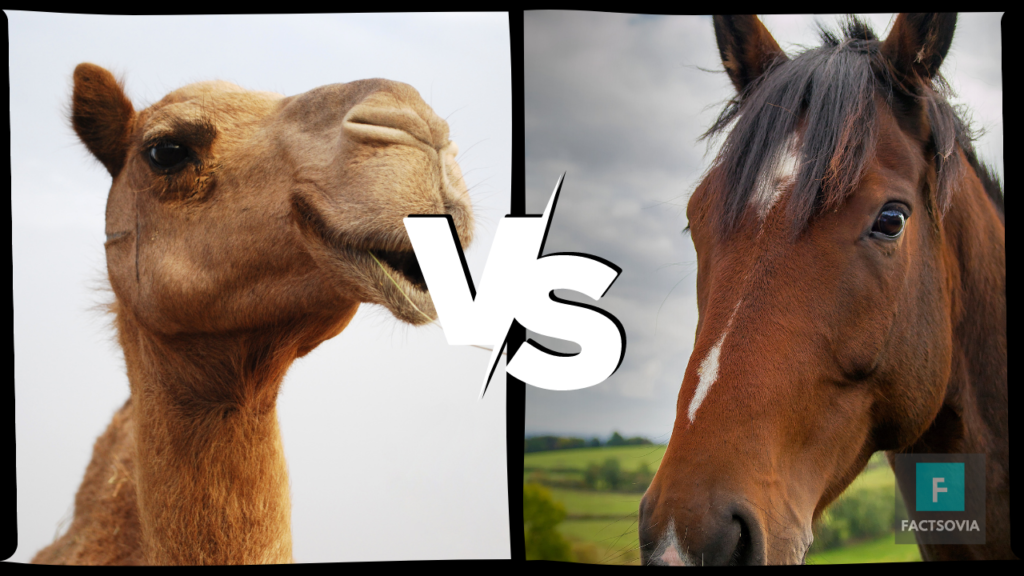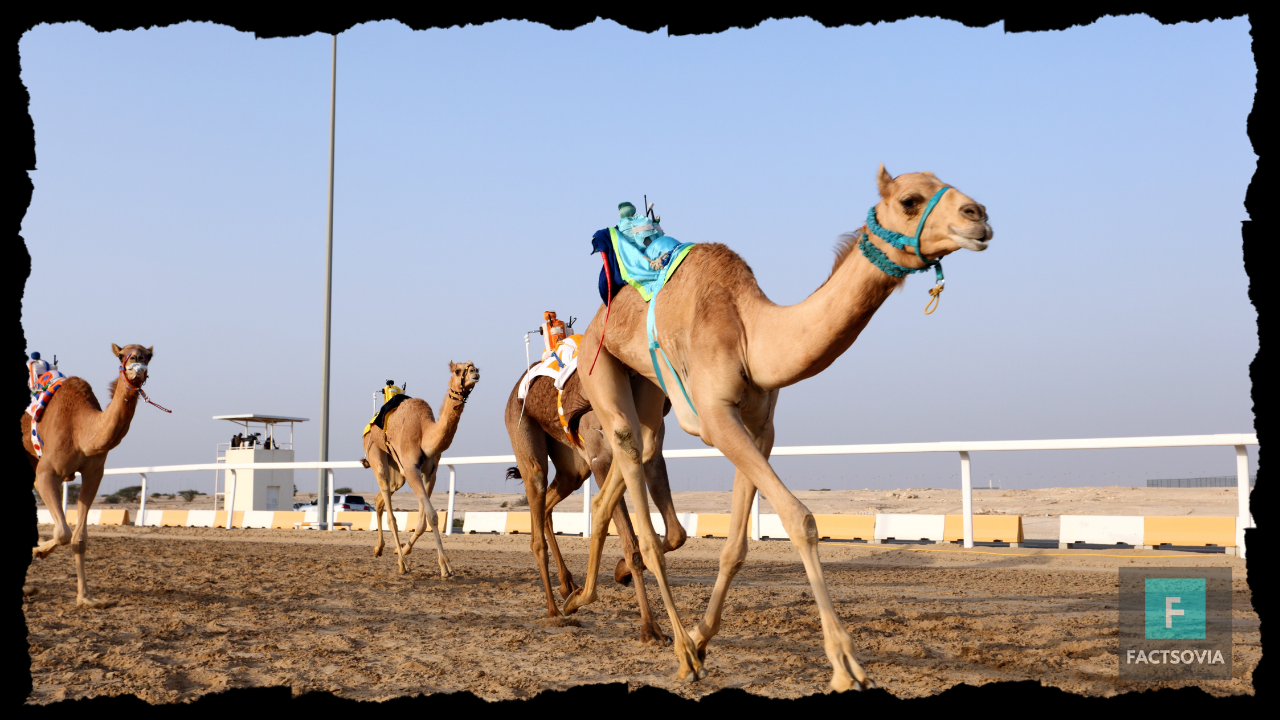We use affiliate links to run our site. When you buy through links on our site, we may earn an affiliate commission, without any added cost to you. Learn more
Are you curious about the incredible speed of one of nature’s most fascinating creatures? Picture a majestic camel racing through the desert, defying the scorching sun and sandy terrain with grace and power.
Camels have long been associated with endurance and the ability to survive in harsh desert environments. They are known for their humped backs, unique anatomy, and impressive adaptability. While camels are not typically known for their speed, they are capable of surprising bursts of velocity.
How fast can a camel really run? Prepare to be amazed as we uncover the secrets of these resilient creatures and explore the factors that influence their speed.
From their unique anatomy to the training techniques used to enhance their swiftness, we’ll dive into the captivating world of camel speed. Get ready for a thrilling journey that will leave you in awe of these remarkable beings!
Anatomy of a Camel
To comprehend a camel’s speed capabilities, it’s essential to understand their anatomical features. Camels possess long, powerful legs perfectly adapted for traversing challenging terrains.
Their unique foot structure, consisting of broad, cushioned pads, aids in stability and helps distribute the animal’s weight evenly.
This adaptation allows camels to maintain balance while moving swiftly across sand dunes or rocky surfaces.
Speed of a Camel
When discussing the speed of a camel, it’s important to differentiate between sustained pace and maximum velocity.
Camels are renowned for their remarkable endurance, capable of traveling long distances at a steady pace of around 12 to 15 miles per hour (19 to 24 kilometers per hour).
However, when prompted, camels can achieve impressive bursts of speed, reaching up to 40 miles per hour (64 kilometers per hour) for short distances.
Are camels faster than horses?

Camels and horses are both remarkable animals known for their speed and endurance. However, when it comes to comparing their speeds, horses generally have the advantage.
Horses are renowned for their incredible agility and swiftness, capable of reaching impressive speeds that surpass those of camels.
On average, a well-trained racehorse can achieve speeds of around 40 to 45 miles per hour (64 to 72 kilometers per hour) in short bursts. Some horse breeds, such as the Thoroughbred, are specifically bred for speed and excel in racing competitions.
Camels, on the other hand, have a different set of strengths. While they may not match the top speeds of horses, they possess incredible endurance and adaptability to harsh environments.
This endurance allows them to traverse long distances without tiring easily, making them well-suited for journeys through deserts and other challenging terrains.
Factors Affecting Camel Speed
Various factors influence the speed at which camels can run.
One significant factor is the age and health of the camel. Younger, healthier camels tend to have more energy and greater speed potential.
Additionally, the terrain plays a crucial role. Camels excel in traversing sandy landscapes, utilizing their broad, padded feet to move swiftly through loose soil.
On the other hand, rough or rocky terrain may hinder their speed and require more cautious movement.
Training for Speed
Camel racing is a popular sport in certain regions, and training plays a vital role in enhancing a camel’s speed. Trainers employ a combination of physical conditioning and mental stimulation to improve performance.
Regular exercise, such as brisk walks, jogging, and controlled gallops, helps build stamina and strengthens the muscles necessary for running. Training also includes desensitization to crowds and loud noises, as camels need to remain calm and focused during races.
Camel Racing
Camel racing is very popular in Western Asia, North Africa, the Horn of Africa, Pakistan, Mongolia, and Australia.
In the past, camels were often controlled by child jockeys, leading to allegations of human rights abuses. This has resulted in nationwide bans on underage labor in countries like the UAE and Qatar.
To address this issue, modern camel racing has adopted remote-controlled robotic whips to control the camels.
One of the most popular camel races is the Camel Cup in Alice Springs, Australia, which offers a significant prize purse.
“The Boulia Desert Sands” in Queensland boasts the largest prize money for a camel race in Australia.
Health and Safety Considerations
While camels possess impressive speed capabilities, it is essential to prioritize their well-being and safety. Overexertion and excessive racing can lead to physical strain and potential injuries.
Proper veterinary care, regular check-ups, and monitoring the camel’s overall health are crucial to ensuring their long-term fitness and performance.
Responsible race organizers implement strict regulations and safety measures to protect these magnificent creatures.
These Are The Fastest Animals in This World
Frequently Asked Questions (FAQs):
Can camels outrun other animals?
While camels possess impressive speed, they are not known for being the fastest animals. There are other animals, such as cheetahs and horses, that can reach higher speeds.
How long can a camel sustain its top speed?
Camels can sustain their top speed of around 40 miles per hour (64 kilometers per hour) for relatively short distances. Their true strength lies in their endurance rather than their ability to sprint.
Are there specific camel racing events held worldwide?
Yes, camel racing is popular in various regions, particularly in the Middle East and parts of Asia. These events attract participants from different countries and showcase the unique skills of racing camels.
How do camels adapt to running in sandy environments?
Camels have broad, padded feet that help them navigate sandy terrains. This adaptation provides them with traction and stability, allowing them to move swiftly through loose soil.
Are there different breeds of racing camels?
Yes, there are different breeds of camels used for racing purposes. These breeds are selectively bred for their speed and endurance, and breeders aim to develop superior racing lines through careful breeding programs.
Conclusion
We hope this article has shed light on the astonishing speed capabilities of camels and provided you with a deeper understanding of their anatomy, training, and racing achievements.
Now it’s your turn to spread the word! Share this fascinating piece with your friends and family to amaze them with the incredible abilities of camels.
And if you’re hungry for more captivating articles and insights, explore our website for a treasure trove of intriguing topics.
Don’t just be a passive reader—take action! Get ready to embark on new adventures and explore the wonders of the natural world.
Amazon and the Amazon logo are trademarks of Amazon.com, Inc, or its affiliates.
